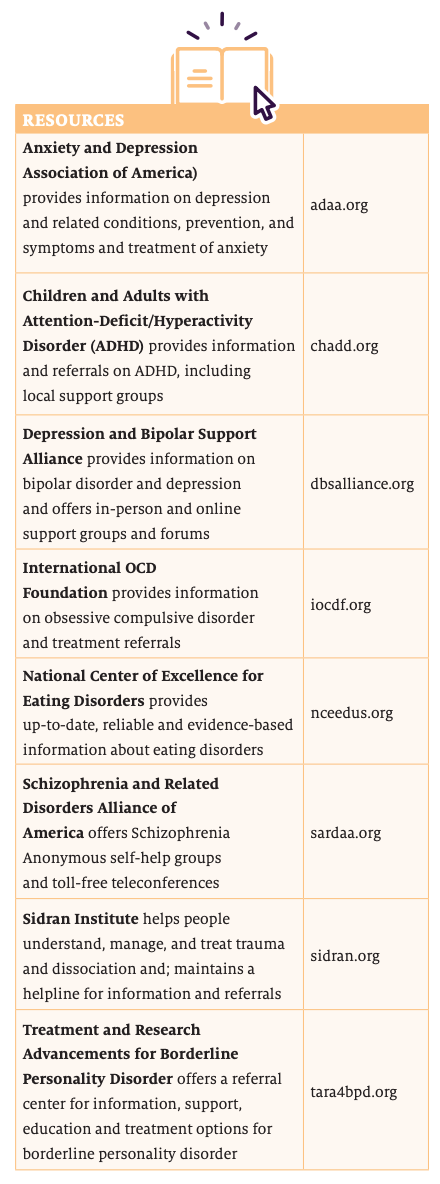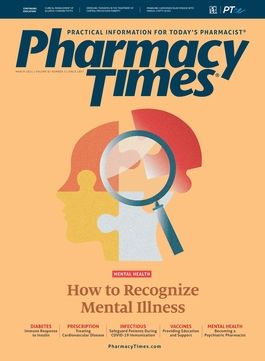Publication
Article
Pharmacy Times
Recognize Mental Illness Through Observation and Screening
Author(s):
Pharmacists can help patients find appropriate resources, support, and treatment.
Mental health is a state of well-being in which individuals can cope with life’s stresses and function as civilized, productive members of society.
Before COVID-19 emerged, mental health statistics1 were already grim:1
- About half of all mental health conditions begin by age 14 years.
- Depression affects 264 million people worldwide.
- Individuals with severe mental conditions die 10 to 20 years earlier than the general population.
- Mental illness costs more than $1 trillion annually.
- Suicide is the second leading cause of death in people aged 15 to 29 years.
- There is fewer than 1 mental health professional for every 10,000 people globally. Since the lockdowns and isolation resulting from COVID19 began a year ago, mental illnesses have increased in both intensity and number.2
SIGNS AND SYMPTOMS
Mental health challenges look different for each individual affected. In fact, many individuals suffer from multiple mental illnesses. No mental health diagnosis is the same. Therefore, it can be difficult to recognize. Let’s begin with a very basic review of several of the most common mental health disorders3 :
- Anxiety can cause excessive fear or worry about imagined or real situations.
- Attention deficit disorders are some of the most common mental disorders in children. Often these disorders resolve in adulthood but not always. They are marked by a lack of focus and an inability to control impulsive behavior.
- Bipolar disorder is characterized by alternating episodes of depression and mania.
- Depression is different from normal grief and sadness, known as situational depression, and can cause anger, frustration, and/or sadness, often to the extreme.
- Eating disorders are driven by obsessive behaviors and thoughts surrounding body image. These disorders often involve overly indulging in calories, severely limiting calorie intake, or a combination, known as binging and purging.
- Schizophrenia and psychotic disorders are serious psychiatric disorders that can cause people to believe, hear, or see things that are not real.
- Substance abuse disorders involve excessive use of alcohol or drugs, often resulting from the attempt to self-medicate other mental health issues.
Generally, there are small changes in how individuals behave long before symptoms become serious. Some of these changes include alcohol or drug abuse; changes in eating habits, sleeping patterns, or school or work performance; decreased interest in grooming or hygiene; disorganized thoughts; disproportional fears or worries; emotional extremes; hypersensitivity to sights, smells, sounds, or touch; irritability or sadness that lasts longer than usual; isolation or withdrawal from family and friends; lack of focus; loss of interest in things that used to provide pleasure; and odd or unusual behavior.
ASSESSING FOR MENTAL ILLNESS
Screening tools are resources designed to help individuals or providers determine if there is a mental health issue that requires treatment. These resources can be in digital or written form. These tools use a database of standardized questions that can be different depending on the suspected diagnosis.
The answers to these questions provide valuable information on patient health and a starting point for diagnosis and treatment. This information can also be used help both patients and providers set and measure goals during treatment.
Complete mental health assessments involve much more than just a screening questionnaire. Some possibilities include as follows4 :
- Cognitive evaluation gauges the patient’s ability to reason, recall information, and think clearly. Questions may also be posed regarding the patient’s competence to perform daily responsibilities, such as caring for oneself or going to work
- Laboratory tests, such as bloodwork, a brain scan, or a urine test, can help rule out other physical conditions. Brain tumors and substance abuse have been known to produce changes that mimic mental illness.
- Mental evaluation includes asking how symptoms affect daily life, if the patient has tried to treat them on his or her own, and what makes symptoms better or worse. It is also an opportunity to observe that patient’s behavior and physical appearance.
- Mental health history includes asking patients about how long they have had symptoms, if they ever had psychiatric treatment, and if they have a family or past history of mental illness.
- Personal history focuses on questions regarding the patient’s lifestyle, such marital status, what they do for a living, and their biggest sources of stress and any major traumas they have endured.
- Physical exam can help determine if anything else is wrong that may be manifesting as signs of mental illness, such as a neurological problem or thyroid disorder.
Screening questionnaires are often performed during an annual physical exam at a physician’s office, and pediatricians often complete a simple screening at every office visit because most mental illness surfaces early in life. These questionnaires can also be implemented at schools if school personnel feel it is necessary.
PHARMACIST INVOLVEMENT AND RESOURCES
Patients or parents may come to the pharmacy for advice about changing behaviors or questions about psychotropic medications. Pharmacists must take the time with patients to question them further. Below is a list of resources that pharmacists can use to print off screening questionnaires or to provide patients with resources to for more in-depth support.
MENTAL HEALTH PROVIDERS
Many types of providers can treat mental disorders. The most common include5 :
- Licensed clinical social workers. They have master’s degrees in social work and training in mental health and can diagnose mental disorders and provide counseling.
- Licensed professional counselors. Professional counselors usually have a master’s degree, but training requirements vary by state. They can diagnose mental disorders and provide counseling.
- Psychiatrists. These medical doctors specialize in mental health. They can diagnose and treat mental disorders and prescribe medications.
- Psychologists. Psychologists usually have a doctoral degree, but they are not medical doctors. They can diagnose and treat mental health disorders but cannot prescribe medications. Treatment usually includes talk-therapy either in a group or individually.

KATHLEEN KENNY, PHARMD, RPH, has more than 25 years of experience as a community pharmacist and is a freelance clinical medical writer based in Colorado Springs, Colorado.
REFERENCES
- United Nations. UN policy brief: COVID-19 and the need for action on mental health. May 13, 2020. Accessed February 16, 2021. un_policy_brief-covid_and_mental_health_final.pdf
- US Department of Health & Human Services. What to look for. MentalHealthgov. Updated August 22, 2017. Accessed February 16, 2021. https://www.mentalhealth.gov/what-to-look-for
- Post-traumatic stress disorder. MedlinePlus. Updated December 29, 2020. Accessed February 16, 2021.
- Mercy. Mental health assessment. Accessed March 5, 2021. https:// www.mercy.net/service/mental-health-assessment/
- Mayo Clinic. Mental illness. Accessed March 5, 2021. https://www. mayoclinic.org/diseases-conditions/mental-illness/symptomscauses/syc-20374968







